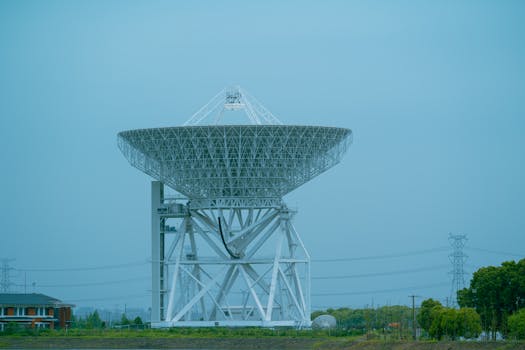
Satellite Telecommunications 2023: What’s New and What’s Next? Satellite Telecommunications
The satellite telecommunications industry is undergoing a significant transformation, driven by advances in technology, changing consumer demands, and the need for more efficient and reliable communication services. As we navigate through 2023, it’s essential to examine the current state of the industry, the latest trends, and what the future holds.
Satellite telecommunications play a critical role in connecting remote and underserved communities, providing vital communication services, and enabling global communication networks. The industry has experienced significant growth over the years, driven by the increasing demand for satellite-based services, such as broadband internet, television broadcasting, and mobile connectivity.
Current Trends and Developments
In 2023, the satellite telecommunications industry is witnessing several key trends and developments. One of the most significant advancements is the deployment of low-Earth orbit (LEO) satellites, which offer faster and more reliable communication services. Companies like SpaceX, Amazon, and OneWeb are leading the charge in this area, with plans to launch thousands of LEO satellites in the coming years.
Another trend is the increasing use of satellite-based Internet of Things (IoT) services, which enable the connection of devices and sensors in remote and hard-to-reach areas. This has significant implications for industries like agriculture, transportation, and energy, where IoT devices can be used to monitor and manage critical infrastructure.
The adoption of 5G technology is also driving growth in the satellite telecommunications industry. As 5G networks become more widespread, there will be a greater need for satellite-based services to provide backup and redundancy, ensuring that communication services remain available even in areas with limited or no terrestrial coverage.
Emerging Technologies and Innovations
In addition to current trends and developments, several emerging technologies and innovations are poised to shape the future of the satellite telecommunications industry. One of the most exciting advancements is the development of quantum communications, which promises to provide ultra-secure communication services using quantum encryption.
Another area of innovation is the use of artificial intelligence (AI) and machine learning (ML) in satellite telecommunications. AI and ML can be used to optimize satellite operations, improve network performance, and enhance customer experience. For example, AI-powered systems can predict and prevent network outages, reducing downtime and improving overall reliability.
The integration of satellite and terrestrial networks is also an area of significant innovation. As the industry moves towards a more converged network architecture, satellite telecommunications will play a critical role in providing seamless and ubiquitous connectivity. This will enable a wide range of new services and applications, from smart cities to connected vehicles.
Challenges and Opportunities
Despite the many opportunities and advancements in the satellite telecommunications industry, there are also significant challenges to be addressed. One of the major concerns is the issue of space debris, which poses a significant threat to the long-term sustainability of satellite operations. As the number of satellites in orbit increases, there is a growing need for effective debris removal and mitigation strategies.
Another challenge is the need for more efficient and sustainable satellite designs. As the industry continues to grow, there will be a greater need for satellites that are designed with sustainability in mind, using materials and technologies that minimize environmental impact.
Despite these challenges, the satellite telecommunications industry offers significant opportunities for growth and innovation. As the demand for satellite-based services continues to increase, companies and organizations are investing heavily in new technologies and infrastructure. This is creating new opportunities for employment, entrepreneurship, and economic development, particularly in rural and underserved communities.




